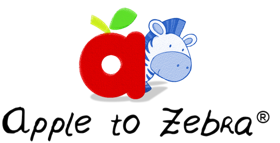Animals
Birds – Categorize feathers from different birds. Look at feathers with a magnifying glass. Identify parts of a bird, such as the beak, claw, wings, etc.

Make “bird watchers” for observing the birds on the playground. Take two cardboard rollers from toilet paper and staple them together. Colour and attach a string long enough to slip on and off the head.
Learn the names of birds that frequent your area. If you don’t know what kind of birds they are, get a book and encourage the child to help you identify them.
Birds must protect the eggs they lay in their nest. Give the child a plastic egg (or real egg) to carry with them and be responsible for during the school day.
Set up a bird feeding station in a secluded area. Make a bird feeder by cutting the sides off a plastic bottle or milk carton and filling it with bird seed.

Mammals – Act out movements of different mammals or play “Guess what I am.” Seek pictures of mother animals and baby animals and learn their names.

Identify animals and their products. Sing songs about different animals. Make murals and paintings of mammals.
Categorize mammals by their size – small, medium, or large.
Fish – Buy a whole fish at a fish market and identify the parts.
Match up pictures of fish that are alike.
Insects and Spiders – Insects have six legs, while spiders have eight. Make insects and spiders from clay and pipe cleaners. Talk about how insects help us (bee and lady bug) and how they harm us (termite and mosquito).

Take a teeny, tiny walk on the playground and look for little insects. Turn over and old log or a rock and see what you might find. Observe a spider web and explain how spiders catch flies with their webs.
Pets – Rabbits, fish, gerbils, hamsters, and birds make good class pets. Children can learn about their care, nutrition, and habits from observing them. Talk about how pets and other animals help us. Make posters about being kind to pets. Make drawings, paintings, puppets, or stories about the child’s pet.

Animal Growth – Let the child sequence animal growth cards. Act out how caterpillars spin a cocoon, then turn into butterflies. Discuss what different animals need to grow.

Animal Habitat – Look for animal homes outside or around your house. Do not disturb them – just look! Be sure and look up in the air and down on the ground. Match pictures of animals and their homes. Describe what different animals use to make their homes.
Classify animals and insects to the environment in which they live or travel. Make a mural of land, air, and water, then let the child draw or cut out animals and put them in the appropriate place.

Discuss what animals do in different seasons, such as migrate and hibernate. Categorize pets, farm animals, zoo animals, and forest animals. What does “camouflage” mean? How do some animals blend in with their surroundings? Why is this necessary?
Extinct Animals and Fossils – Let the child set up dinosaur figures in sand. Make paper plants and a volcano from cardboard. Make a dinosaur lotto game where the child match up like dinosaurs.
Make clay figures of dinosaurs or draw giant dinosaurs on butcher paper. Measure out the size of dinosaurs on the playground. Hide chicken bones or other bones in a box of dirt and let the child play “archaeologist” and dig them up and try to put them together. Make fossils by pressing shells, leaves, and other objects in clay, plaster of Paris, or cookie dough.

